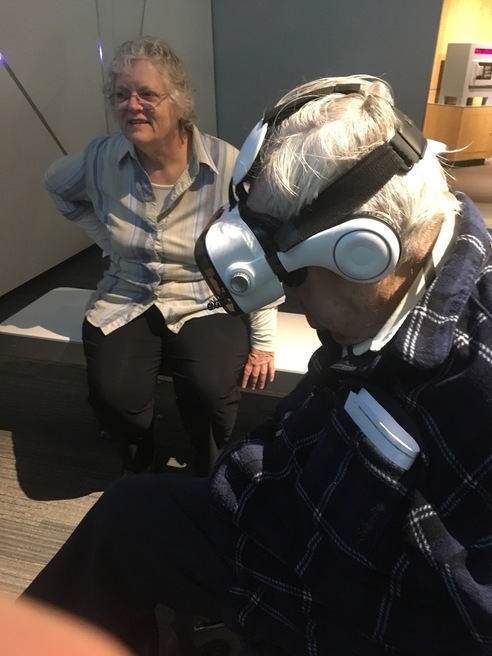
Walter and Eileen both wanted to live out their lives in the home they loved - thanks to their son, David, they did. Walter applied his inventiveness and nonstandard way of approaching problems to the challenges of his 90's and 100's. When he needed to start using a cane, he attached a small LED flashlight to it so he could always see at night when he got up. His walker was tricked out with a flashlight, basket for carrying stuff, a container for Milky Ways, and better skids on the legs.
As he aged and lost his eyesight, hallucinations started appearing occasionally. The scientist would reach out to touch them; he could describe in detail what he was seeing; when asked about them, he would look carefully and answer questions until they faded away.
His curiosity continued to the end - he took "field trips" every few weeks with Lee to see things that interested him:
- a marina in Essington so he could see boats getting launched and pulled from the water
- a regular tour of half a dozen sites under construction to watch their progress
- visiting each of the several houses his family lived in and the three he lived in with Eileen before moving to 1440.
- a trip to the Franklin Institute to see what they had
- regular trips to Microcenter to see what might interest him despite his inability to work with his beloved computers
At the end, Walter still enjoyed visits from family and querying them about their lives. Though he declined physically, he suffered no painful conditions - other than the inability to keep learning things!